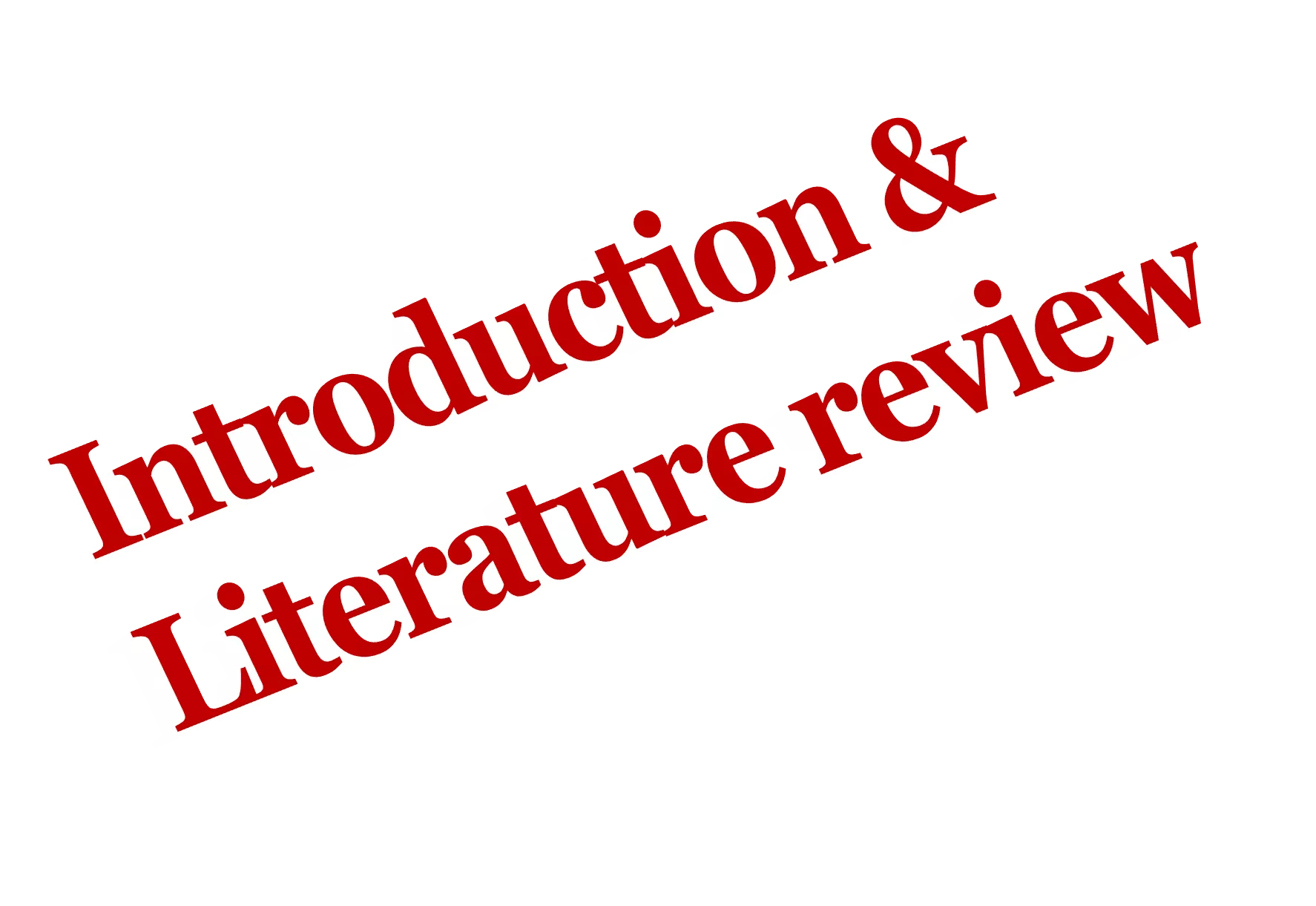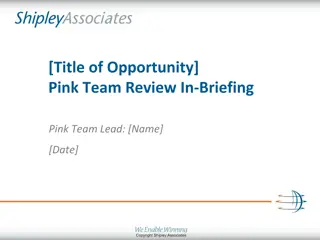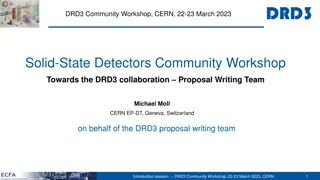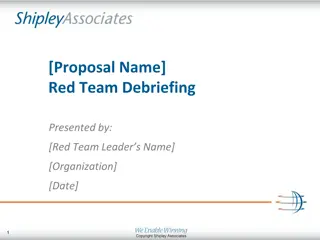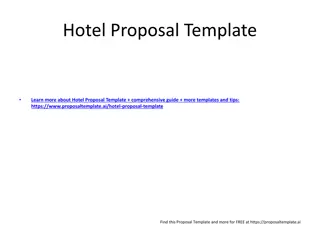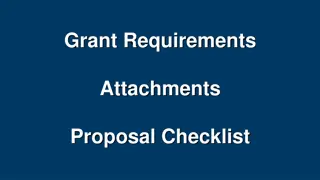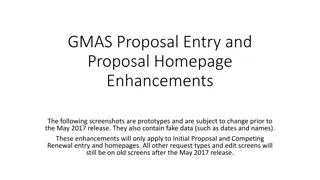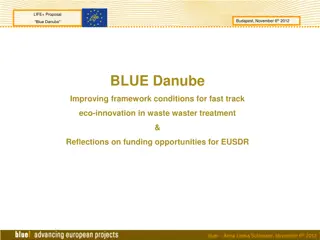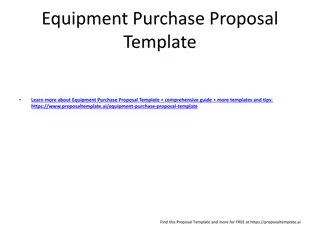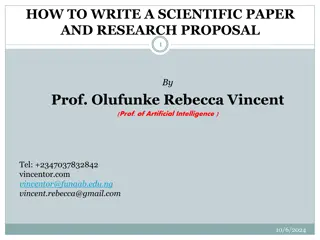Comprehensive Guidelines for Research Proposal Writing
This guide covers the initial project pitch, literature review importance, and reasons for conducting a thorough literature review. It emphasizes the significance of familiarizing oneself with existing knowledge and theories in the field to establish a strong foundation for one's research. The content also highlights the relevance of research questions, problem statements, and the overall context. Additionally, it underlines the critical aspects of identifying gaps in current knowledge and showcasing the research's value and potential contributions.
Download Presentation

Please find below an Image/Link to download the presentation.
The content on the website is provided AS IS for your information and personal use only. It may not be sold, licensed, or shared on other websites without obtaining consent from the author. Download presentation by click this link. If you encounter any issues during the download, it is possible that the publisher has removed the file from their server.
E N D
Presentation Transcript
Prof. Dr. Ahmed Ali Mohammed Ph.D. Immunoparasitology University of Salford International Manchester, UK
Introduction The first part of your proposal is the initial pitch (throw) for your project, so make sure it briefly explains what you want to do and why. It should: 1. Introduce the topic. 2. Give background and context. 3. Outline your problem statement and research question(s). Some important questions to guide your introduction include: Who has an interest in the topic (e.g. scientists, practitioners, policymakers, particular members of society)?
How much is already known about the problem? What is missing from current knowledge? What new insights will your research contribute? Why is this research worth doing? If your proposal is very long, you might include separate sections with more detailed information on the background and context, problem statement, aims and objectives, and importance of the research.
Literature review A literature review is a survey of scholarly sources on a specific topic. It provides an overview of current knowledge, allowing you to identify relevant theories, methods, and gaps in the existing research. Writing a literature review involves finding relevant publications (such as books and journal articles), critically analyzing them, and explaining what you found. A good literature review doesn t just summarize sources, it analyzes, synthesizes, and critically evaluates to give a clear picture of the state of knowledge on your subject.
Its important to show that youre familiar with the most important research on your topic. A strong literature review convinces the reader that your project has a solid foundation in existing knowledge or theory. It also shows that you re not simply repeating what other people have already done or said. In this section, aim to demonstrate exactly how your project will contribute to conversations in the field, Ex: 1. Compare and contrast: what are the main theories, methods, debates and controversies? 2. Be critical: what are the strengths and weaknesses of different approaches? 3. Show how your research fits in: how will you build on, challenge, or synthesize the work of others?
Why you write a literature review? When you write a thesis, dissertation, or research paper, you will have to conduct a literature review to situate your research within existing knowledge. Writing the literature review shows your reader how your work relates to the existing research and what new insights it will contribute. There are several reasons to conduct a literature review at the beginning of a research project: 1. To familiarize yourself with the current state of knowledge on your topic. 2. To ensure that you re not just repeating what others have already done. 3. To position yourself in relation to other researchers and theorists. 4. To identify gaps in knowledge and unresolved problems that your research can address. 5. To develop your theoretical framework and methodology. 6. To provide an overview of the key findings and debates on the topic.
Where does the literature review go in a dissertation? The literature review usually comes near the beginning of your thesis or dissertation. After the introduction, it grounds your research in a scholarly field and leads framework or methodology. directly to your theoretical You might also have to write a literature review as a stand-alone assignment. In this case, the purpose is to evaluate the current state of research and demonstrate your knowledge of scholarly debates around a topic. The content will look slightly different in each case, but the process of conducting a literature review follows the same steps.
How to write your literature review? Step 1: Search for relevant literature Before you begin searching for literature, you need a clearly defined topic. If you are writing the literature review section of a dissertation or research paper, you will search for literature related to your research problem and questions. On the other hand, if you are writing a literature review as a stand-alone assignment, you will have to focus and develop a central question to direct your search. Unlike a dissertation research question, this question has to be answerable without collecting original data. You should be able to answer it based only on a review of existing publications.
When you begin, you need to: 1. Make a list of keywords Start writing your literature review by creating a list of keywords related to your research question. Include each of the key concepts or variables you re interested in, and list any synonyms and related terms. You can add to this list if you discover new keywords in the process of your literature search. 2. Search for relevant sources Read the abstract of the references to find out whether an article is relevant to your question. When you find a useful book or article, you can check the bibliography (References) to find other relevant sources.
To identify the most important publications on your topic, take note of recurring citations. If the same authors, books or articles keep appearing in your reading, make sure to seek them out. 3. Receive feedback on language, structure and layout Professional editors proofread and edit your paper by focusing on: Academic style. Vague sentences. Grammar. Style consistency.
Step 2: Evaluate and select sources You probably won t be able to read absolutely everything that has been written on the topic, however, you ll have to evaluate which sources are most relevant to your questions. For each publication, ask yourself: What question or problem is the author addressing? What are the key concepts and how are they defined? What are the key theories, models and methods? Does the research use established frameworks or take an innovative approach? What are the results and conclusions of the study? How does the publication relate to other literature in the field? Does it confirm, add to, or challenge established knowledge? How does the publication contribute to your understanding of the topic? What are its key insights and arguments?
While you are reading for your literature, make sure the sources you use are credible, and make sure you read any landmark studies and major theories in your field of research. The scope of your review will depend on your topic and discipline. In the sciences you usually only review recent literatures. Take notes and cite your sources as you read; you should also begin the writing process. You can incorporate these notes later into the text of your literature review. It can be helpful to make afull citation information and write a paragraph of summary and analysis for each source.This helps you remember what you read and saves time later in the process.
Step 3: Identify themes, debates, and gaps To begin organizing your literature review s argument and structure, you need to understand the connections and relationships between the sources you ve read. This step will help you work out the structure of your literature review and (if applicable) show how your own research will contribute to existing knowledge. Based on your reading and notes, you can look for: Trends and patterns (in theory, method or results). Themes: what questions or concepts recur across the literature? Debates, conflicts and contradictions: where do sources disagree? Pivotal publications: are there any influential theories or studies that changed the direction of the field? Gaps: what is missing from the literature? Are there weaknesses that need to be addressed?
Step 4: Outline your literature reviews structure There are various approaches to organizing the body of a literature review. You should have a rough idea of your strategy before you start writing. Depending on the length of your literature review, you can combine several of these strategies. For example, your overall structure might be thematic, but each theme is discussed chronologically. The chronologicalissimplest approach to trace the development of the topic over time. However, if you choose this strategy, be careful to avoid simply listing and summarizing sources in order. In Thematic strategy, if you have found some recurring central themes, you can organize your literature review into subsections that address different aspects of the topic.
In the methodological way, if you draw your sources from different disciplines or fields that use a variety of research methods, you might want to compare the results and conclusions that emerge from different approaches. Regarding the theoretical strategy, a literature review is often the foundation for a theoretical framework. You can use it to discuss various theories, models, and definitions of key concepts. You might argue for the relevance of a specific theoretical approach, or combine various theoretical concepts to create a framework for your research.
Step 5: Write your literature review Remember that like any other academic text, your literature review should have an introduction, a main body, and a conclusion. In this step you ll combine all the previous steps you previously performed (Searching the relevant literatures, Evaluating sources, Identifying the themes, debates and gaps, Outline the structure) and start to Write your literature review.
Thank you For Listening See you next lecture





